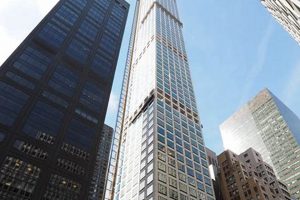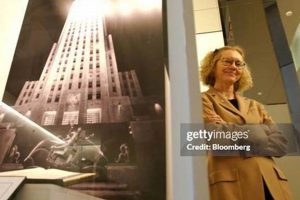Atlanta skyscrapers are iconic structures that define the city’s skyline. They are a symbol of Atlanta’s growth and prosperity, and they offer stunning views of the city and its surroundings.
Skyscrapers have played a major role in Atlanta’s development. They have helped to attract businesses and residents to the city, and they have contributed to the city’s economic growth. Skyscrapers have also helped to shape Atlanta’s culture and identity. They are a symbol of the city’s ambition and its commitment to progress.
There are many different skyscrapers in Atlanta, each with its own unique design and history. Some of the most famous skyscrapers in Atlanta include the Bank of America Plaza, the Westin Peachtree Plaza Hotel, and the Georgia-Pacific Tower. These skyscrapers are all landmarks in Atlanta, and they are a popular destination for tourists and visitors.
1. Height
- Economic Impact: The construction and maintenance of skyscrapers in Atlanta provide significant economic benefits to the city. The projects create jobs, stimulate the construction industry, and attract businesses and residents to the area.
- Architectural Innovation: The pursuit of height in Atlanta skyscrapers has led to advancements in architectural design and engineering. Architects and engineers have developed innovative solutions to challenges posed by constructing extremely tall buildings, resulting in unique and visually stunning structures.
- Engineering Marvels: The structural engineering behind Atlanta skyscrapers is remarkable. These buildings withstand high winds, seismic activity, and other environmental factors, showcasing the ingenuity and expertise of engineers.
- Tourism and Recreation: The observation decks and public spaces in Atlanta skyscrapers offer breathtaking views of the city and surrounding areas. These attractions draw tourists and locals alike, providing opportunities for recreation and enjoyment.
In conclusion, the height of Atlanta skyscrapers is not merely a physical attribute but a multifaceted aspect that shapes the city’s identity, economy, architecture, and overall experience. These towering structures continue to be a source of pride for Atlanta and a testament to the city’s growth and ambition.
2. Architecture
- Modernist Marvels: Many Atlanta skyscrapers embody the principles of modernism, characterized by clean lines, geometric forms, and a focus on functionality. Buildings like the Westin Peachtree Plaza Hotel and the 191 Peachtree Tower exemplify this style, with their sleek facades and soaring heights.
- Art Deco Elegance: Atlanta’s architectural landscape also features stunning examples of Art Deco design. The Candler Building, constructed in 1906, is a prime example, showcasing intricate ornamentation, geometric patterns, and a distinctive setback design.
- Neoclassical Grandeur: Neoclassical architecture finds expression in Atlanta skyscrapers such as the Georgia State Capitol. This style draws inspiration from ancient Greek and Roman architecture, characterized by symmetrical facades, columns, and pediments, exuding a sense of grandeur and authority.
- Contemporary Creations: Atlanta’s skyline continues to evolve with contemporary architectural masterpieces. The Mercedes-Benz Stadium, designed by HOK, features a retractable roof and an innovative facade that changes color. The twisting form of the Four Seasons Hotel Atlanta designed by Gensler, adds a dynamic element to the city’s architectural landscape.
The architectural diversity of Atlanta skyscrapers not only enhances the city’s visual appeal but also reflects its rich history, cultural influences, and commitment to innovation. These structures stand as testaments to the creativity and expertise of renowned architects, contributing to Atlanta’s identity as a vibrant and architecturally significant city.
3. History
- Architectural Evolution: The history of Atlanta skyscrapers reflects the evolution of architectural styles and construction techniques. Early skyscrapers, such as the Equitable Building (1892), showcased intricate Victorian detailing, while later skyscrapers, such as the Bank of America Plaza (1992), embraced modern design principles and innovative materials.
- Economic Prosperity: The construction of skyscrapers in Atlanta has been driven by the city’s economic prosperity. Skyscrapers provide much-needed office space for businesses and symbolize the city’s financial strength and growth.
- Urban Development: The concentration of skyscrapers in Atlanta’s downtown area has shaped the city’s urban development. Skyscrapers have played a major role in creating a dense and vibrant urban core, attracting businesses, residents, and visitors.
- Cultural Identity: Atlanta skyscrapers have become iconic symbols of the city’s identity. The unique skyline is recognized around the world and is featured in countless works of art, literature, and popular culture.
The history of Atlanta skyscrapers is a testament to the city’s ambition, innovation, and growth. Skyscrapers have transformed Atlanta’s skyline, economy, and culture, and they continue to play a vital role in shaping the city’s future.
4. Business
- Economic Impact: The presence of numerous businesses in Atlanta skyscrapers contributes to the city’s strong economy. These businesses generate jobs, attract investment, and support the local economy. The taxes paid by these businesses also help fund essential city services.
- Job Creation: Atlanta skyscrapers provide employment opportunities for thousands of people. The buildings house a diverse range of industries, from finance and law to technology and healthcare. This variety of businesses ensures that there are job opportunities for people with a wide range of skills and experience.
- Business Environment: The concentration of businesses in Atlanta skyscrapers creates a vibrant and supportive business environment. Businesses can network with each other, share ideas, and collaborate on projects. This environment fosters innovation and entrepreneurship.
- Urban Development: The presence of skyscrapers in Atlanta’s central business district has influenced the city’s urban development. The skyscrapers have attracted businesses and residents to the downtown area, creating a dense and walkable urban environment.
The connection between Atlanta skyscrapers and business is mutually beneficial. Skyscrapers provide businesses with modern and efficient office space, while businesses contribute to the city’s economy and culture. The presence of skyscrapers has helped to make Atlanta a major business center in the southeastern United States.
5. Tourism
The connection between Atlanta skyscrapers and tourism is mutually beneficial. Skyscrapers provide tourists with unique and memorable experiences, while tourism generates revenue for the city and supports local businesses. The presence of skyscrapers has helped to make Atlanta a major tourist destination in the southeastern United States.
Here are some specific examples of how Atlanta skyscrapers contribute to tourism:
- The observation decks of Atlanta skyscrapers offer breathtaking views of the city and its surroundings. Visitors can see for miles in all directions, and they can enjoy panoramic views of the city’s skyline and landmarks.
- Many Atlanta skyscrapers offer tours to visitors. These tours provide an up-close look at the architecture and engineering of these massive structures. Visitors can learn about the history of the buildings and the challenges involved in constructing them.
- Atlanta skyscrapers are often used as backdrops for movies, television shows, and other forms of media. This exposure helps to raise the profile of the city and its skyscrapers,.
The connection between Atlanta skyscrapers and tourism is a vital part of the city’s economy and culture. Skyscrapers are not just architectural landmarks; they are also major tourist attractions that contribute to the city’s overall appeal.
6. Culture
There are many examples of how Atlanta skyscrapers have been incorporated into culture. The city’s skyscrapers have been featured in paintings, sculptures, and photographs. They have also been the setting for many novels, short stories, and poems. In addition, Atlanta skyscrapers have been used as the backdrop for countless movies and television shows. This exposure has helped to make Atlanta skyscrapers recognizable around the world.
The connection between Atlanta skyscrapers and culture is a vital part of the city’s identity. Skyscrapers are not just architectural landmarks; they are also cultural icons. The buildings represent the city’s ambition, innovation, and prosperity. They are a source of pride for Atlanta residents, and they are a major draw for tourists from around the world.
7. Sustainability
- Energy Efficiency: Atlanta skyscrapers are using a variety of energy-efficient technologies to reduce their environmental impact. These technologies include LED lighting, solar panels, and geothermal heating and cooling systems.
- Water Conservation: Atlanta skyscrapers are also using a variety of water conservation measures to reduce their water consumption. These measures include low-flow plumbing fixtures, rainwater harvesting systems, and green roofs.
- Recycled Materials: Many Atlanta skyscrapers are using recycled materials in their construction. These materials include recycled steel, concrete, and glass.
- Indoor Environmental Quality: Atlanta skyscrapers are also designed to improve indoor environmental quality for occupants. These measures include using low-VOC (volatile organic compound) materials, providing natural ventilation, and access to natural light.
The sustainability features of Atlanta skyscrapers not only benefit the environment but also the building owners and occupants. Sustainable buildings can lower operating costs, improve occupant health and well-being, and attract tenants who are increasingly looking for green spaces. As a result, the demand for sustainable skyscrapers is expected to continue to grow in Atlanta.
8. Future
These new skyscrapers will have a significant impact on the city’s skyline. They will add to the city’s already impressive collection of tall buildings, and they will help to create a more vibrant and dynamic urban environment. The new skyscrapers will also provide much-needed office space for businesses, and they will help to attract new residents and visitors to the city.
The connection between the future of Atlanta skyscrapers and the city’s overall deve
lopment is clear. Skyscrapers are a symbol of a city’s growth and prosperity, and they play a vital role in the city’s economy and culture. As Atlanta continues to grow, the demand for skyscrapers will only increase. The city’s new skyscrapers will help to shape the city’s future and will continue to make Atlanta one of the most dynamic and exciting cities in the world.
FAQs about Atlanta Skyscrapers
Atlanta skyscrapers are iconic structures that define the city’s skyline and play a vital role in its economy and culture. Here are some frequently asked questions about Atlanta skyscrapers:
Question 1: What is the tallest skyscraper in Atlanta?
Answer: The tallest skyscraper in Atlanta is the Bank of America Plaza, which is 1,023 feet tall.
Question 2: How many skyscrapers are in Atlanta?
Answer: There are over 100 skyscrapers in Atlanta.
Question 3: What is the most famous skyscraper in Atlanta?
Answer: The most famous skyscraper in Atlanta is the Westin Peachtree Plaza Hotel, which is known for its unique cylindrical shape and revolving restaurant.
Question 4: What is the oldest skyscraper in Atlanta?
Answer: The oldest skyscraper in Atlanta is the Equitable Building, which was built in 1892.
Question 5: What is the most sustainable skyscraper in Atlanta?
Answer: The most sustainable skyscraper in Atlanta is the 1180 Peachtree, which is LEED Platinum-certified.
Question 6: What is the future of Atlanta skyscrapers?
Answer: The future of Atlanta skyscrapers is bright. The city is growing rapidly, and the demand for office space is increasing. Several new skyscrapers are planned for construction in Atlanta in the coming years.
Atlanta skyscrapers are a testament to the city’s growth, prosperity, and ambition. They are a vital part of the city’s economy and culture, and they continue to shape the city’s skyline.
Transition to the next article section…
Tips for Visiting Atlanta Skyscrapers
Atlanta skyscrapers are impressive structures that offer stunning views of the city. If you’re planning on visiting one of these skyscrapers, here are a few tips to make the most of your experience:
Tip 1: Choose the right skyscraper. There are many different skyscrapers in Atlanta, each with its own unique features. Do some research to find a skyscraper that interests you, and that offers the type of views you’re looking for.
Tip 2: Buy your tickets in advance. Many Atlanta skyscrapers require you to purchase tickets in advance, especially if you want to visit during peak hours. Buying your tickets online will save you time and hassle.
Tip 3: Arrive early. Skyscrapers can be popular tourist destinations, so it’s a good idea to arrive early to avoid crowds. This will give you plenty of time to take in the views and enjoy the experience.
Tip 4: Take your time. Once you’re at the top of a skyscraper, take some time to enjoy the views. Don’t just rush through your visit. Take your time to soak in the sights and sounds of the city.
Tip 5: Be aware of the weather. The weather in Atlanta can change quickly, so be sure to check the forecast before you visit a skyscraper. If the weather is bad, you may not be able to enjoy the views.
Tip 6: Wear comfortable shoes. You’ll be doing a lot of walking when you visit a skyscraper, so be sure to wear comfortable shoes. You’ll also need to remove your shoes before entering some skyscrapers, so be sure to wear socks that you don’t mind taking off.
Tip 7: Be respectful of other visitors. Skyscrapers can be crowded, so be sure to be respectful of other visitors. Don’t push or shove, and be aware of your surroundings.
Tip 8: Have fun! Visiting an Atlanta skyscraper is a great way to experience the city. Take your time, enjoy the views, and have fun!
By following these tips, you can make the most of your visit to an Atlanta skyscraper.
Atlanta Skyscrapers
Atlanta skyscrapers are more than just tall buildings. They are symbols of the city’s growth, prosperity, and ambition. They are also major contributors to the city’s economy and culture. Atlanta’s skyscrapers provide office space for many of the city’s largest businesses, and they are a popular tourist destination. The city’s skyscrapers have also been featured in numerous works of art and literature, and they have been used as the backdrop for countless movies and television shows.
The future of Atlanta skyscrapers is bright. The city is growing rapidly, and the demand for office space is increasing. Several new skyscrapers are planned for construction in Atlanta in the coming years, and these buildings will continue to shape the city’s skyline. Atlanta’s skyscrapers are a testament to the city’s growth, prosperity, and ambition. They are a vital part of the city’s economy and culture, and they continue to shape the city’s skyline.







